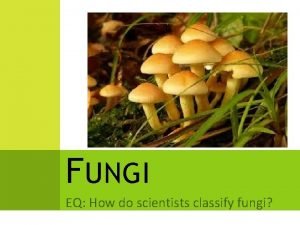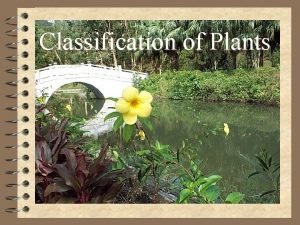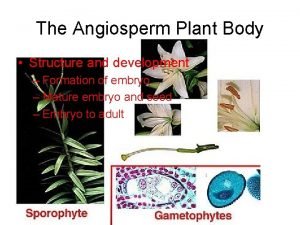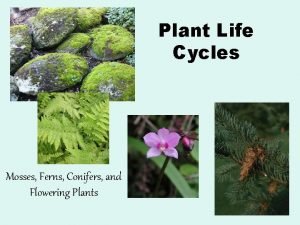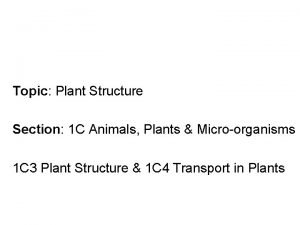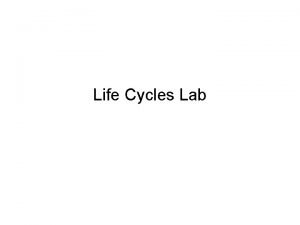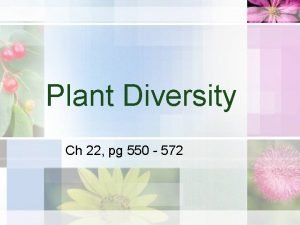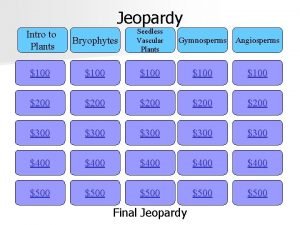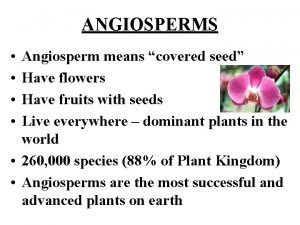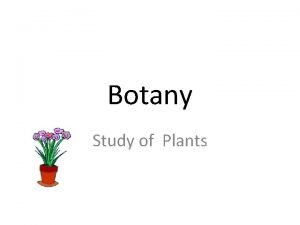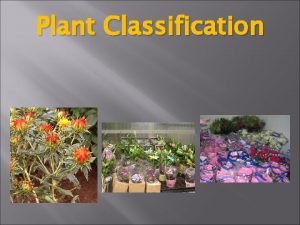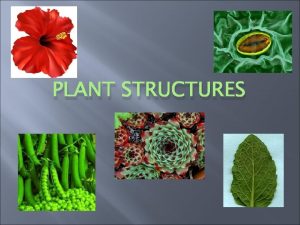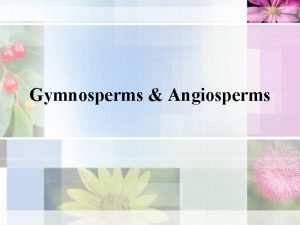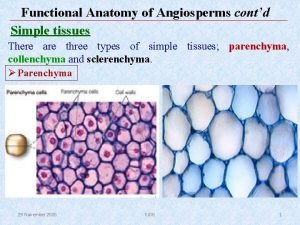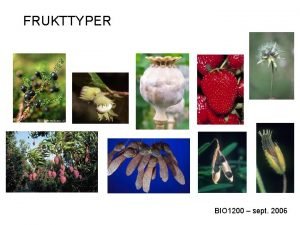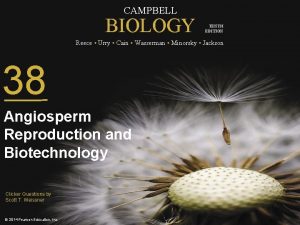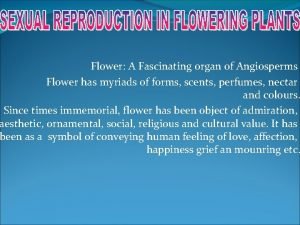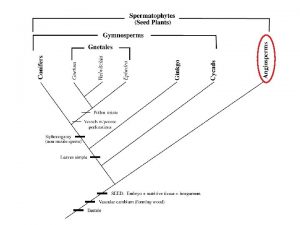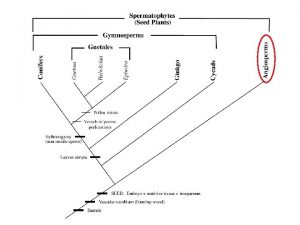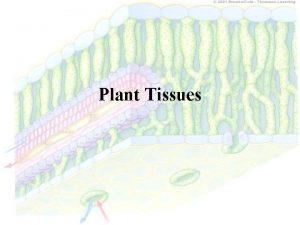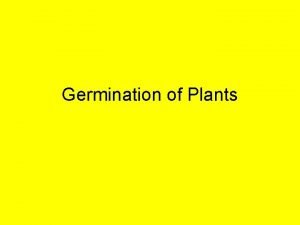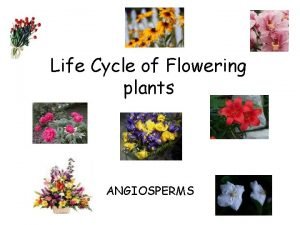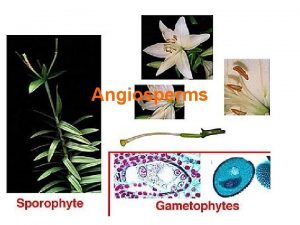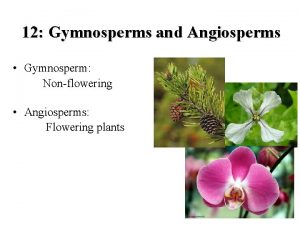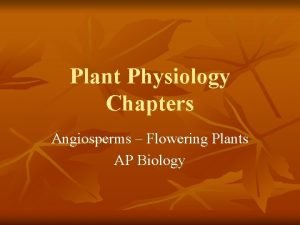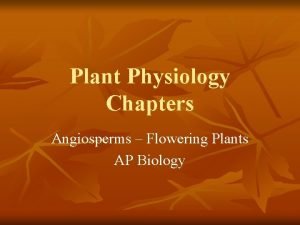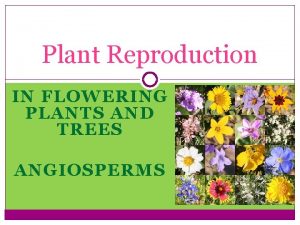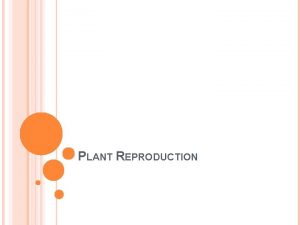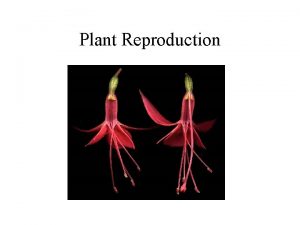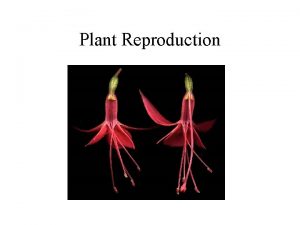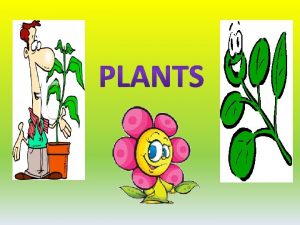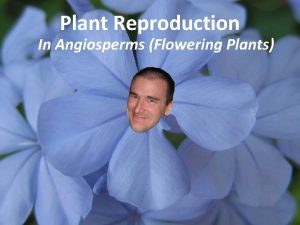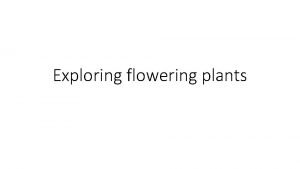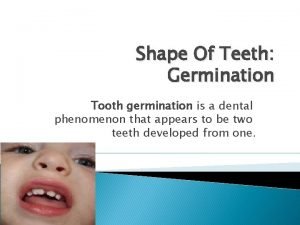Topic 9 4 Germination Angiosperms Any flowering plant




















- Slides: 20

Topic 9. 4 - Germination

Angiosperms Any flowering plant Most coevolved with a pollinator species (insect, bat, bird) Two classes (based on morphology) 9. 3. 1

Monocot Dicot 9. 3. 1

SKILL: You must draw, label, and annotate a flower diagram. These are the parts: 9. 3. 1

Dicot Flower Diagram Know how to diagram and label the: petal, stigma, style, sepal, anther, filament and ovary. 9. 3. 1

Stamen: male organ of the flower Carpel: female organ of the flower (seed or ovule bearing) *pistil is used to refer to a single carpel* 9. 3. 1

All plants show two different generations in their life cycle. 1. Gametophyte generation (haploid) 2. Sporophyte generation (diploid) • Two generations alternate • Gametophyte produces gametes by mitosis • Sporophyte produces spores by meiosis 9. 3. 2

Germination is the process through which a dormant seed begins to sprouts, grow and develop. This is initiated through three processes. 1. Pollination is the transfer of pollen grains from the anther to the carpel, usually in another flower. Expedited by: – Insects – Wind – Water movement 9. 3. 2

How Bee Orchids Drive Male Bees Crazy • https: //www. youtube. com/watch? v=91 Jw 2 KD EAho

2. Seed dispersal is the moving of seeds away from the parent plant. This ensures that the species is able to spread and that the offspring are not competition for the parent plants. 9. 3. 2

3. Fertilization the fusion of male and female gametes (sex cells) to form a new organism Pollination does not always lead to fertilization: a flower can be ‘pollinated’ with pollen from a different species. After fertilization, the plant begins to form the fruit 9. 3. 2

9. 3. 3

Germination is the process in which seeds sprout and begin to grow into mature plants. After seeds have been formed and dispersed, they remain dormant until certain conditions are met, including: • Oxygen • Temperature • Water supply If conditions are unfavorable, the seed will remain dormant. 9. 3. 4

Germination Conditions CONDITION Oxygen Water Temperature IMPORTANCE Necessary for cellular respiration; provide electrons that help release stored energy Water is absorbed by the seed which causes it to swell. When the testa cracks, hydrolytic enzymes are activated that break down large molecules Different plants require different temperatures to leave dormancy 9. 3. 4

Germination Conditions CONDITION Oxygen Water Temperature IMPORTANCE Necessary for cellular respiration; provide electrons that help release stored energy Water is absorbed by the seed which causes it to swell. When the testa cracks, hydrolytic enzymes are activated that break down large molecules Different plants require different temperatures to leave dormancy 9. 3. 4

When angiosperms are grown and begin to flower, they experience photoperiodicity. This means that their flowering is dependent on the amount of light available. Short day plants require minimum light hours to flower (spring/fall) while long day plants require maximum light hours to flower (summer). 9. 3. 6

Even though the names refer to day length, it is actually the length of NIGHT that controls the flowering process. This was shown in the 1940 s. 9. 3. 6

Phytochrome is a photoreceptor protein that is able to absorb light. • Pr phytochrome absorbs red light and is quickly converted to Pfr • Pfr phytochrome absorbs far red light and is slowly converted to Pr. It changes slowly even without light. FAST SLOW 9. 3. 6

After a full day, plants will contain high levels of Pfr which is slowly converted to Pr during the night. This allows the plants to ‘time’ the darkness. • In long day plants, Pfr acts as a promoter for flowering because the night is shorter • In short day plants, Pfr acts as an inhibitor flowering because the night is longer 9. 3. 6

The Hidden Beauty of Pollination • https: //www. youtube. com/watch? v=eqs. Xc_a ef. KI&feature=youtu. be&t=8 s
 Classify flowering and nonflowering plants
Classify flowering and nonflowering plants Flowering and non flowering plants
Flowering and non flowering plants Characteristic
Characteristic Partes de la semilla
Partes de la semilla Stem modification in mint and jasmine
Stem modification in mint and jasmine Moss fern gymnosperm angiosperm
Moss fern gymnosperm angiosperm Flowering plant diagram
Flowering plant diagram Parts of green plants
Parts of green plants Diplod
Diplod Contrast gymnosperms and angiosperms
Contrast gymnosperms and angiosperms Seedless vascular plants vs bryophytes
Seedless vascular plants vs bryophytes Angiosperm life cycle
Angiosperm life cycle Lycophyta
Lycophyta Tagetes lower classifications
Tagetes lower classifications Partes
Partes Types of angiosperm
Types of angiosperm Anatomy of angiosperms
Anatomy of angiosperms How do plants reproduce
How do plants reproduce Angiosperms
Angiosperms Double fertilization in angiosperms
Double fertilization in angiosperms Polyembyony
Polyembyony

